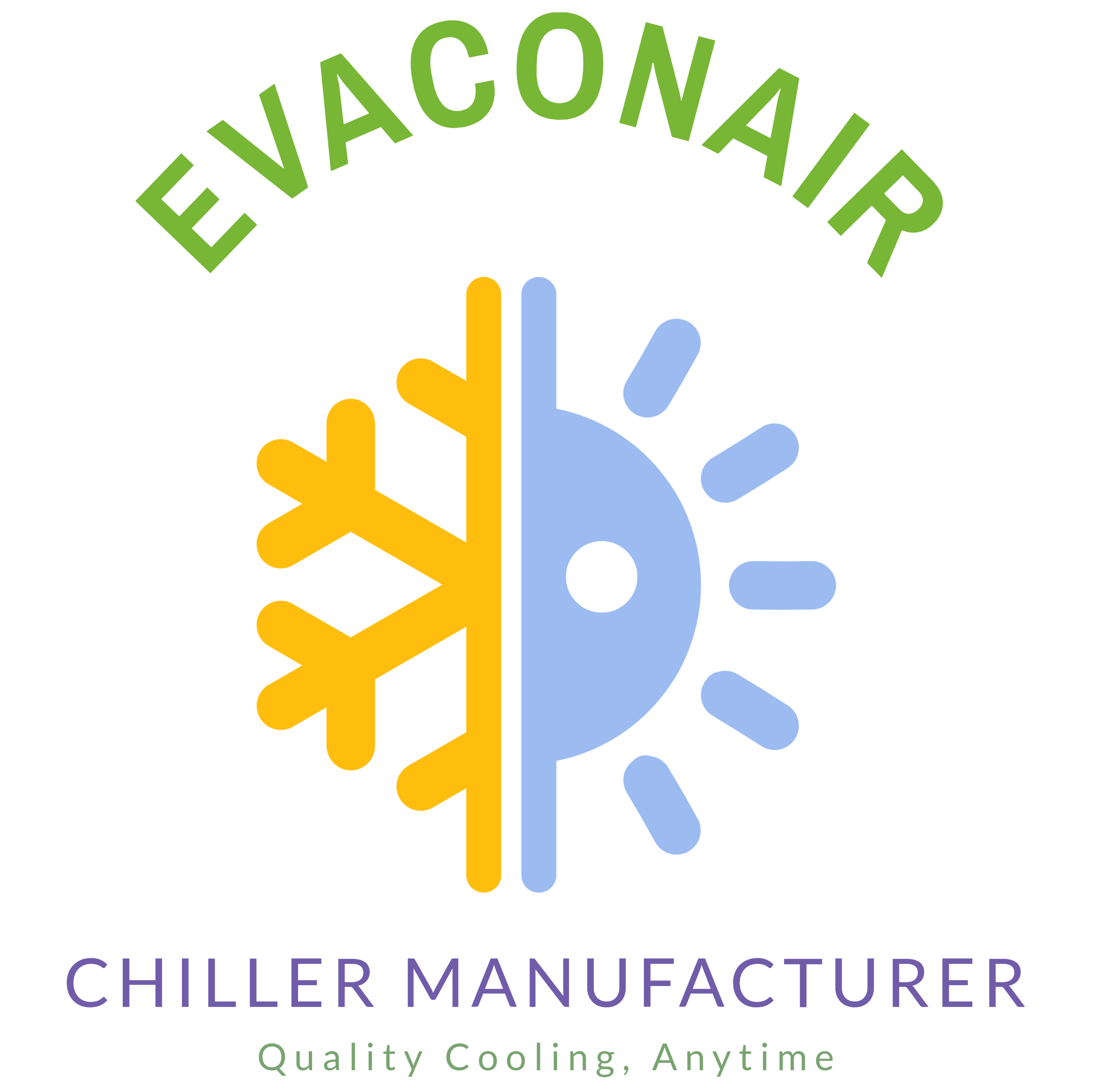Blog
Posted on
August 1, 2024
in
How Many Types of Chiller Plants Are There?
1. Air-Cooled Chiller Plants
- Description: These plants use air to cool the refrigerant in the chiller. They are often used in applications where water is scarce or where lower installation costs are desired.
- Features: Less complex, requires less maintenance, and is typically easier to install. However, they are less efficient in high ambient temperatures compared to water-cooled systems.
2. Water-Cooled Chiller Plants
- Description: These plants use water to cool the refrigerant in the chiller. The heat is transferred to water, which is then cooled in a cooling tower.
- Features: More efficient than air-cooled chillers, especially in larger installations. They require a cooling tower and water treatment system. Suitable for applications with high cooling loads.
3. Absorption Chiller Plants
- Description: These use heat (often from natural gas or waste heat) instead of electricity to drive the cooling process. They are commonly used where heat is available or for combined heat and power (CHP) systems.
- Features: Can be more energy-efficient in certain situations and are often used in large industrial or commercial applications.
4. Centrifugal Chiller Plants
- Description: These use a centrifugal compressor to provide cooling. They are typically used for large commercial and industrial applications.
- Features: Known for high efficiency and capacity. Suitable for high-load applications and often used in large buildings and facilities.
5. Screw Chiller Plants
- Description: These use screw compressors and are designed for both commercial and industrial applications. They offer a good balance of efficiency and capacity.
- Features: Reliable and efficient, suitable for medium to large cooling loads.
6. Scroll Chiller Plants
- Description: These use scroll compressors and are suitable for medium to large commercial applications.
- Features: Generally quieter and more efficient for smaller loads compared to screw and centrifugal chillers.
7. Modular Chiller Plants
- Description: These consist of multiple smaller chiller units that can be combined to meet larger cooling loads. They offer flexibility and scalability.
- Features: Can be expanded as cooling needs grow and often provide redundancy in case of unit failure.
Each type of chiller plant is designed to meet specific cooling requirements and operational conditions. The choice of chiller plant depends on factors like cooling load, efficiency requirements, space, and availability of resources.
Related posts
October 1, 2024
What is the Capacity of a 2 Ton Chiller?
A 2-ton chiller refers to a chiller system with the ability to remove 24,000 BTU/hr of heat. The term [...]
Read moreOctober 1, 2024
What is the Unit of Chiller Capacity?
The unit of chiller capacity is typically measured in tons of refrigeration (TR) or kilowatts (kW). [...]
Read moreOctober 1, 2024
What is Chiller Range?
The chiller range refers to the temperature range and cooling capacity that a chiller can handle. The [...]
Read moreOctober 1, 2024
How to Calculate Chiller Size?
Calculating the correct chiller size is crucial to ensuring efficient cooling for your specific [...]
Read more